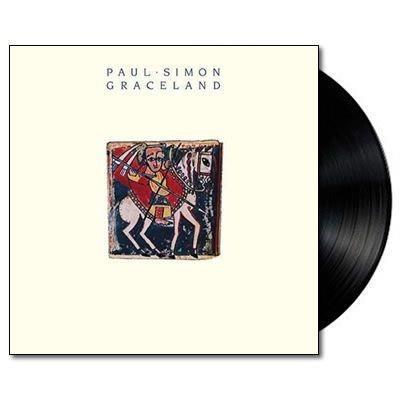 Graceland – Paul Simon
Graceland – Paul Simon
Paul Simon’s body of work, whether initially with Art Garfunkel (Tom & Jerry and later Simon & Garfunkel) or later as a solo artiste, isn’t huge in number, but it’s pretty huge in quality. Just consider songs like Homeward Bound, Sounds of Silence, Boxer or Graceland…they are all modern-day pop anthems. This great singer-songwriter turned 80 last month and I felt like writing a review of his path breaking solo LP, ‘Graceland’.
In the early 80’s, Paul was going through a tough phase. The partnership with Art Garfunkel had fallen, personal life was in shambles and the last few solo efforts didn’t do well. He needed a new direction…an overhaul of sorts. So, in February 1985, after listening to a tape of street music from Soweto (a black township in Johannesburg), Paul Simon, along with and his long-time sound engineer Roy Halee, flew down to gather these sounds with a rough idea of putting an album together. He rounded up local musicians like bassist Bakithi Kumalo, guitarist Ray Phiri, the vocal group Ladysmith Black Mambazo, among others. And all of them just had loads of fun jamming together.
Musically speaking, the entire album is one happy dance-fest in major chords, which is the essence of African music. Well there are minor chords thrown in as well but overall the content remains ebullient in construct. But what really stands out throughout the album is Kumalo’s bass guitar (he went on to have a successful international career as a bassist) and quintessential groovy African chorus. Paul took these jam sessions recordings back to the US and started adding lyrics to them. They were dreamy, lyrical, sometimes disconnected (as the musical flow came first) yet beautifully poetic. Consider these lines from the brilliant title track: And she said, "losing love Is like a window in your heart Everybody sees you're blown apart Everybody sees the wind blow"
The other stand out tracks are The Boy In the Bubble (has there been a better opening to any album than this one?), I Know What I Know, Diamonds In The Soles Of Her Shoes, You Can Call Me Al and Under The African Skies (with Linda Ronstadt). The title of the album refers to Elvis Presley’s Memphis home. Paul believed it represented a spiritual direction: just as he had embarked on a physical journey to collect ideas in Africa, he would spiritually journey to the home of the rock "forefather" to revitalize his music.
The album ran into its share of controversy because of the apartheid era and Paul’s defiance of the boycott, but all that is in the past and long forgotten. What we have today, 35 years later after its release, is an album that has become a charming cornerstone of inclusivity of global sounds in popular western music. It’s the benchmark against which all the subsequent ‘assimilation and amalgamation of sounds from across the world’ albums are measured. And it gave birth to a genre called ‘world music’. But most importantly, the album is a celebration of the greatest invention of mankind – music, the most beautiful universal language ever. The true language of ‘wonder & miracle’.
Year: 1986
Label: Warner Bros.
Length: 43:18
Genre: World beat, Pop, Rock,
Folk Producer: Paul Simon
Rating: 4.5/5
Meraj Hasan is a Mumbai based communication professional (and an amateur poet/musician) with a passion for listening to music the vinyl way. His 32-year-old Technics turntable along with a humble collection of LPs across genres like Classic rock, Classical, Blues and Jazz (amongst others) are his prized possessions. He's also the author of the book 'Khyaalon ki Tapri', a collection of poems. This bestseller book is available on Amazon.
He can be reached at +91 9833410791 or email: meraj.hasan@gmail.com
